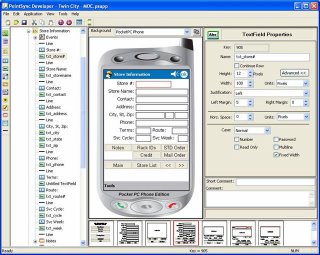
My team is just wrapping up the implementation of an interesting project that involves route sales and delivery. This project involves the usual features on their PDA software such as:
- Delivery person login/password, time/date stamp
- Store look-up query
- Review of store inventory data
- Product delivery update
- Inventory update
- Sign-off
The unique part of this software application developed in PointSync is the "planogram". This PointSync micro-application predicts how much product the specific store usually requires between deliveries. For example - store 104 averages 6 boxes of widgets number 97 between deliveries. The delivery driver/sales person does not have to determine the appropriate number, the application predicts it based upon historic data in the database on the handheld computer.
This kind of application is interesting because rather than simply displaying data, it uses this data to "think" on behalf of the user and to provide instructions to the user. This is true business process automation at work on a PDA.

